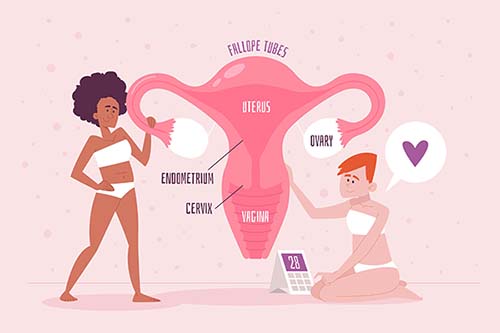PAP Smear VS. Pelvic Exam: What’s the Difference?
So, what is the difference between a PAP Smear and a Pelvic Exam? Both exams help women maintain a healthy reproductive system, but there are some key differences between the two.
PAP Smear
Why is it important?
Pap smears are one of the many women's health services. This screening helps detect pre-cancers and cell changes on the cervix, the narrow outer end of the uterus, that could cause cancer if not treated properly. The good news – cervical problems are easily preventable with regular pap smears combined with vaccinations for human papillomavirus (HPV). Early detection through routine exams plus the HPV vaccine will give you an edge in protecting yourself from developing any serious illnesses or disabilities caused by cancer or another virus!
What should I expect?

During a routine pap smear, the provider will begin by having you lay back and place each foot on a rest. Then the provider will gently insert a speculum into the vagina. A speculum is a tool used to hold the vaginal walls open. At this time, it is common to feel a bit of pressure. The provider will quickly insert and brush over the cervix with a long thin swab. This is done to collect a cell sample.
Now the hardest part is over! Your provider will remove the speculum and the cell samples will be sent to a lab for further testing.
How often do I need it?
Women should begin regular pap smear exams at the age of 21. If the pap smear results come back as normal, the exam only needs to be repeated every three years. Pap smears usually continue throughout a woman’s life to age 65 unless they have had a hysterectomy. Women who have had a hysterectomy do not need to continue receiving pap smears.
To schedule a pap smear exam, call 405-632-6688.
Pelvic Exam
Why is it important?
Pelvic exams look for ovarian cysts (sacs of fluid attached to the ovary where eggs are made), sexually transmitted infections (STIs), fibroids (non-cancerous growths on the uterus), and early-stage cancers. This exam allows for early detection of infections and provides you with a better understanding of your body and your reproductive health.
What should I expect?

During a pelvic exam, you will first lay back and put each foot on a resting place. The provider starts with a visual, external examination of the vulva (external parts of the genitalia) for anything out of the ordinary before starting an internal examination that allows them to see inside your vagina using a speculum. Lastly, the provider will move on to a physical exam. At this time, they will remove the speculum and insert two gloved fingers into the vagina while simultaneously pressing on your lower abdomen with their other hand. This allows your provider to feel your uterus and ovaries. Then you are all done!
How often do I need it?
While providers typically do yearly pelvic exams, it is optional so talk to your primary care provider or learn more about women's health services to see what best fits you. Your provider may recommend a pelvic exam if you are experiencing any symptoms such as unusual vaginal bleeding or discharge, pelvic pain or urinary problems.
The importance of pelvic exams and pap smears cannot be overstated. Whether you are sexually active or not, these exams are necessary to protect your body from potentially life-threatening diseases.
To schedule a pelvic exam, call 405-632-6688.

